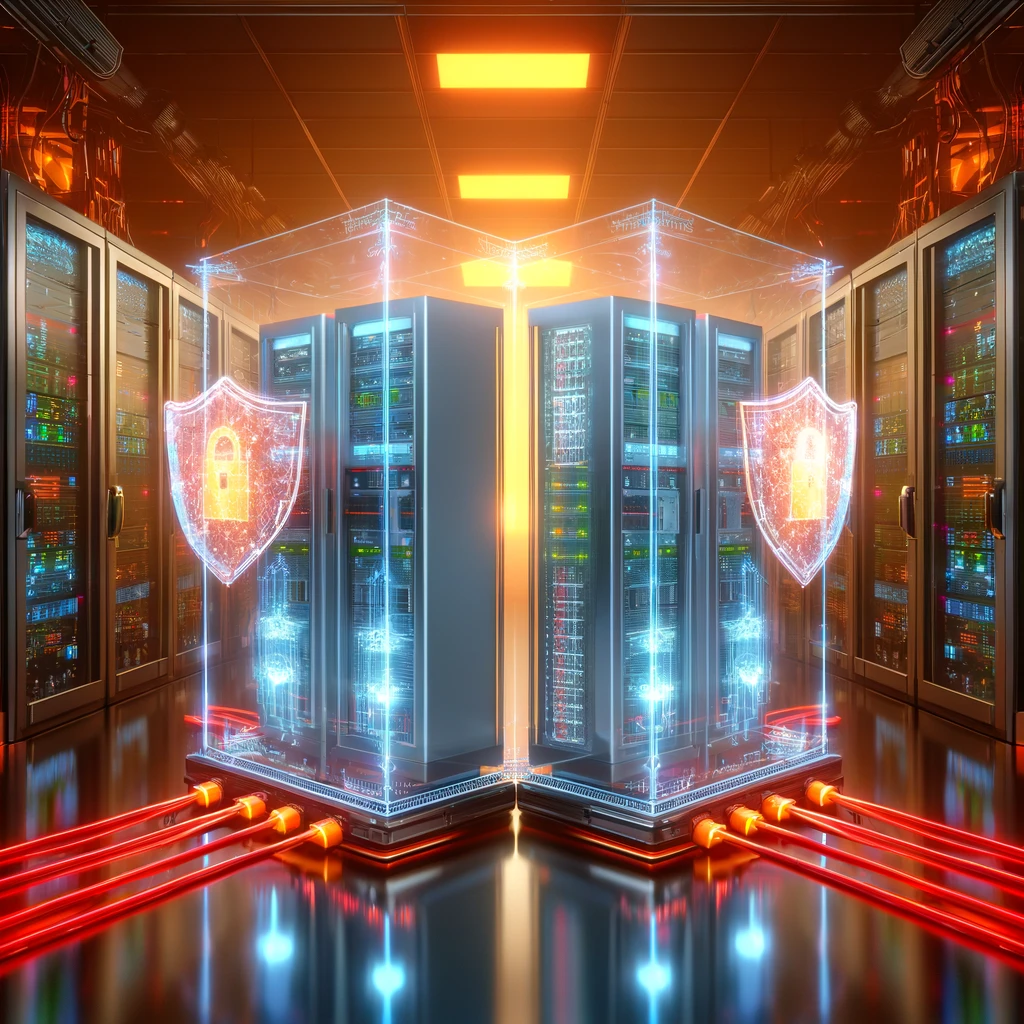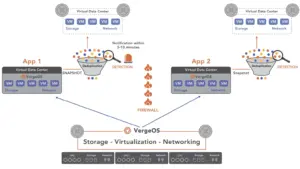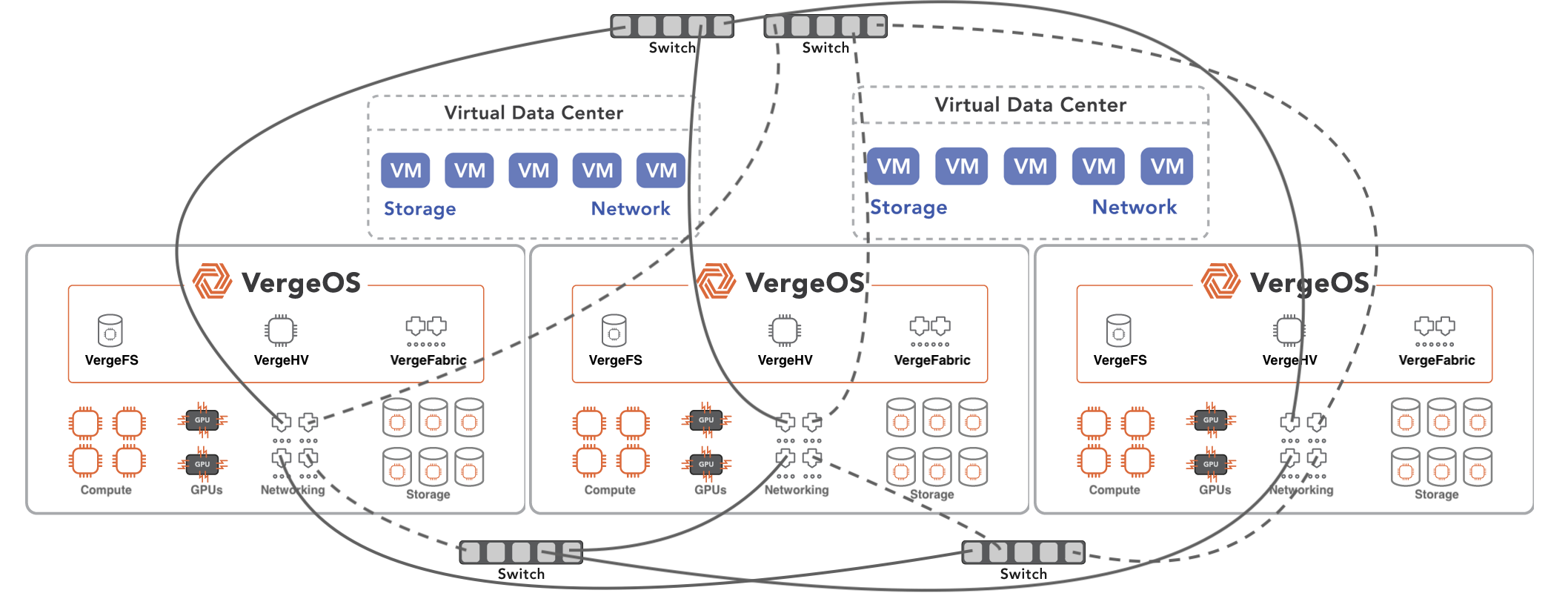
Data center multi-tenancy enables IT professionals to transcend the traditional confines of cloud service providers (CSP) and managed service providers (MSP) use cases so that enterprises and even small data centers can benefit from them. However, adding multi-tenancy functionality to these existing hypervisor solutions incurs a high licensing cost.
Because of the high cost of the multi-tenancy add-on, most organizations must dedicate hardware components to specific, standalone deployments. This approach can lead to significant resource underutilization, as each component (CPU, memory, storage) is confined to a single deployment, even if it’s not being used to its full potential. This setup inherently limits flexibility and can lead to inefficient resource allocation, where some resources may sit idle while others are overtaxed.
Comparing Data Center Multi-Tenancy to a VLAN

A common workaround for the lack of or high cost of multi-tenancy is using a Virtual Local Area Network (VLAN) for each “tenant.” It partitions a physical network at the data link layer (layer 2). VLANs segregate network traffic based on a group ID applied to each packet, thus separating the traffic of different users or departments within the same physical network. While VLANs offer a basic level of network segmentation, they lack the robustness, security, and flexibility provided by a fully realized multi-tenant data center architecture.
A Multi-tenant data center is a single instance of physical infrastructure serving multiple logical or virtual tenant organizations. Cloud computing involves securely sharing resources like storage, networking, and computing capacity among various organizations to enhance efficiency and cut costs.
Data center multi-tenancy enables IT to provide comprehensive resource isolation, better scalability, enhanced security features, and greater tenant autonomy in managing network configurations. This makes it ideal for complex and scalable cloud environments with highly variable and specific tenant demands. It also makes it well-suited for smaller environments that don’t have the IT team resources to manage the complexity of a more extensive VLAN configuration.
Challenges with Traditional Data Center Multi-Tenancy
The High Licensing Cost of Multi-Tenancy
The common perception is that multi-tenancy architectures are primarily beneficial for CSP/MSP use cases because they can share resources efficiently while maintaining strict separation between clients. The number of clients these organizations tend to support makes the high cost of multi-tenancy, although still a significant pain point, more tenable.
However, if the cost barriers associated with implementing multi-tenancy were removed, this technology could appeal to a broader spectrum of organizations. From small businesses to large corporations, all could leverage the enhanced resource utilization, simplified management, and improved operational flexibility that multi-tenancy offers, transforming how they approach IT infrastructure.
Traditional multi-tenancy also poses these challenges:
- Security Vulnerabilities: The shared nature of resources can lead to potential data leaks between tenants.
- Resource Contention: Overlapping demands can affect performance, where one tenant’s heavy usage diminishes resource availability for others.
- Management Complexity: Ensuring compliance and equitable resource distribution adds operational complexity.
- Customization Constraints: Standardization needs can limit tenants’ ability to tailor resources to their specific requirements.
Virtual Data Centers – Data center multi-tenancy for ALL

VergeOS’ Virtual Data Center (VDC) technology delivers multi-tenancy at no additional cost. VDCs do for the entire data center what a virtual machine does for a physical server: encapsulation. VDC encapsulates the data center into a single object that is isolated from the other virtual data centers or tenants while sharing the same hardware. While the use case for multi-tenancy is evident for our many Managed Service Provider (MSP) customers, it also has value for enterprises, educational institutions, government agencies, and small data center customers. The advantages range from simplifying disaster recovery to isolating specific workloads from other workloads or isolating specific resources from specific workloads.
Virtual Data Centers (VDCs) powered by VergeOS address many traditional multi-tenancy issues:
Complete Isolation: Each VDC is fully isolated, functioning as an independent data center. This separation ensures that one tenant’s activities do not impact others, significantly enhancing security and performance.
Simplified Management: VergeOS facilitates easy management and automation across VDCs, reducing the complexity associated with multi-tenant environments.
Enhanced Customization: Tenants can customize their VDCs extensively to meet specific operational needs, offering flexibility that traditional multi-tenant models often lack.
Economic Efficiency: By optimizing resource usage, VergeIO provides a cost-effective solution that maintains multi-tenancy benefits while minimizing its drawbacks.
VergeOS uses our VDC technology for customers who don’t have available hardware but want to test drive the solution.
Critical Use Cases of VergeIO Virtual Data Centers
Disaster Recovery (DR): VergeIO’s VDCs excel in disaster recovery scenarios. Each VDC can be configured with specific DR protocols, ensuring business continuity without impacting other tenants. This isolated environment allows organizations to seamlessly replicate a single object instead of separate tiers and implement failover processes, enhancing resilience against data loss and downtime.
Patch Testing: Patch testing ensures software updates do not disrupt operations. VergeIO’s VDCs provide an ideal environment for patch testing by allowing organizations to deploy and test updates in a controlled, isolated setting before full-scale implementation. This minimizes risks associated with deploying untested patches in a production environment.

Ransomware Protection: Data Centers of all sizes can benefit from better ransomware protection. VDCs are the first layer of VergeIO’s infrastructure-wide ransomware protection strategy. If ransomware gets into your organization, each VDC is isolated, and as a result, the ransomware can’t spread and is contained, shrinking the attack surface. Then, using VergeIO’s ioFortify, you can quickly recover from the attack altogether.
Service Providers: For service providers, VergeIO’s VDCs offer a scalable and secure platform to host services for multiple clients. Providers can manage separate VDCs for each client, ensuring tailored service delivery, robust security, and compliance with individual client contracts and regulatory requirements.
Resource Management: VDCs within VergeOS offer the capability for precise resource dedication. While VergeOS employs sophisticated AI to fine-tune performance consistently, certain scenarios demand designated resources for specific workloads. With VDCs, it’s possible to earmark exact amounts of processing power, memory, or storage for individual VDCs, ensuring a high level of service quality. This dedicated allocation eliminates the possibility of resource competition, providing a stable environment for applications to perform reliably at all times. Additionally, this feature empowers managed service providers (MSPs) and cloud service providers (CSPs) to assure their clients of the resources they’re entitled to, with absolute certainty.
Conclusion
Key to understanding data center multi-tenancy is learning about VergeIO’s Virtual Data Centers. They bring tenancy to all data centers and provide a state-of-the-art solution for multi-tenancy, combining traditional benefits with advanced virtualization technologies. By addressing common issues related to security, performance, and management complexity and offering tailored use cases like DR, service provision, and patch testing, VergeIO’s VDCs represent a significant evolution in data center technology, poised to meet the diverse needs of modern organizations.



